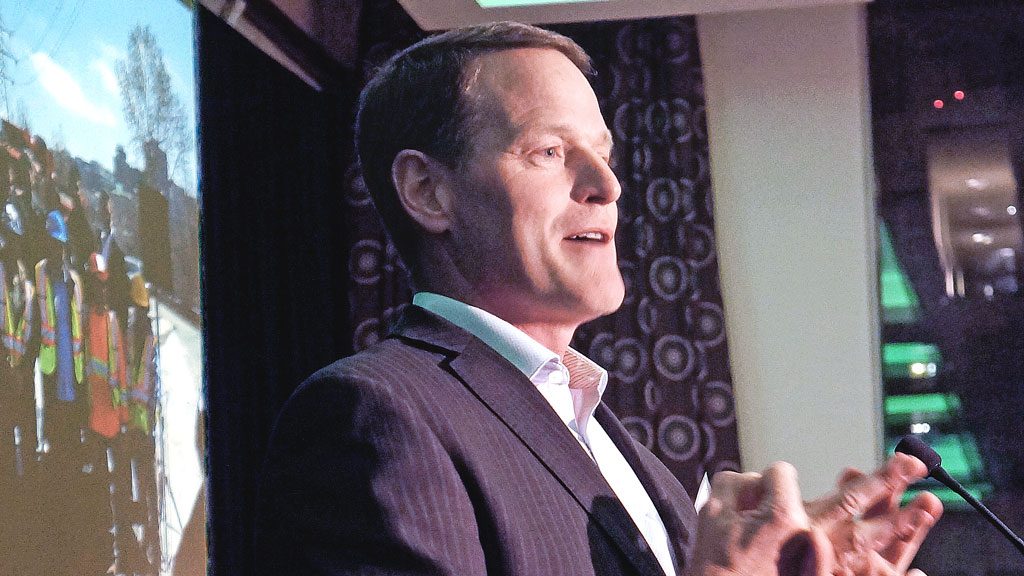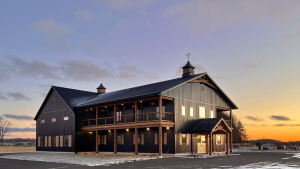Meeting the approval of 14 regulators for a mixed-use residential development on a 200-year-old industrial site is a tall order.
“The complexity can’t be understated,” said Jeff Westeinde, who is behind the development of Zibi — a $1.7-billion, four-million-square-foot, 35-acre development on two islands in the Ottawa River, straddling the cities of Ottawa and Gatineau.
Among the challenges has been to convince authorities “to think outside the box: to use common sense to approve things that hopefully will lead to a world class development,” Westeinde told delegates at the 18th annual Brownie Awards in Toronto recently.
Not an easy pitch, considering the “badly contaminated” lands have required about 450,000 tonnes of soil remediation, said Westeinde, whose company THEIA Partners is developing the project in partnership with Dream Unlimited.
“Most of the politicians looked at us like we were from Mars.”
Nonetheless, the developer’s hard work paid off and it received unanimous approval for rezoning by the cities of Ottawa and Gatineau as well as by the National Capital Commission.
This summer, the project received a $60 million grant from the City of Ottawa for site clean-up — the largest grant ever given by the city for a brownfield remediation project, Westeinde said.
The objective is to see the property on Albert and Chaudiere Islands house about 5,000 people in 10 to 15 years. Zibi — the Algonquin word for river — will also contain office and retail components.
We want to be one of the most sustainable communities on the planet
— Jeff Westeinde
THEIA Partners
This fall its first residents moved in, but “we have a lot of work ahead yet to do,” Westeinde told the 160 or so delegates at the event.
He said the development will take advantage of Ottawa’s underused shoreline along the Ottawa River. He sees it “as the heart of the city” that has sat vacant far too long.
The goal is to be a zero-carbon community, he said.
“We want to be one of the most sustainable communities on the planet.”
He said to get all the overseeing agencies, authorities and residents (including the surrounding Algonquin communities) on board with the development has involved extensive consultation.
Among the development objectives are: a viable transportation network to both sides of the river; a celebration of the land’s First Nations and industrial heritage through adaptive reuse of historic buildings and spaces; and onsite stormwater management and carbon neutral operations.
“We ended up with a contract with our community that says we will deliver a product that is in keeping with the development principles and the feedback we got from the community,” Westeinde said.
“It’s been an incredibly powerful tool for us because when you have 14 regulators…there are times when they tell you that you can’t do things.”
He said among the initial hurdles was persuading authorities to approve the construction of a quarry on the islands which are comprised of “solid rock.”
Environmental concerns prohibit quarries from being built in cities, but the alternative was unacceptable, he said.
“It didn’t make environmental sense” to transport excavated rock to a suburban quarry for crushing and then return it “as a finished product,” he said. “We were going to (have to) release X number of tonnes of greenhouse gas into the environment.”
Westeinde said the developer has partnered with a pulp mill in Ottawa to harvest 11 megawatts of heat rejected by the mill into the Ottawa River annually.
“That is our zero-carbon source for heat and we’re using the Ottawa River for cooling.”
He said the development emphasizes the importance of “place-making” — a community designed where residents know each other and feel part of a neighbourhood.
Westeinde told delegates that First Nations labour and entrepreneurs are a seminal part of the construction project. Eighty per cent of the site cleanup has been done by First Nations Algonquin contractors.
He said the developer received $22 million from a brownfield incentive program in Quebec, which was the first ever of its kind in the province.
The Brownie Awards night was presented by the Canadian Brownfields Network in partnership with Actual Media.











Recent Comments
comments for this post are closed